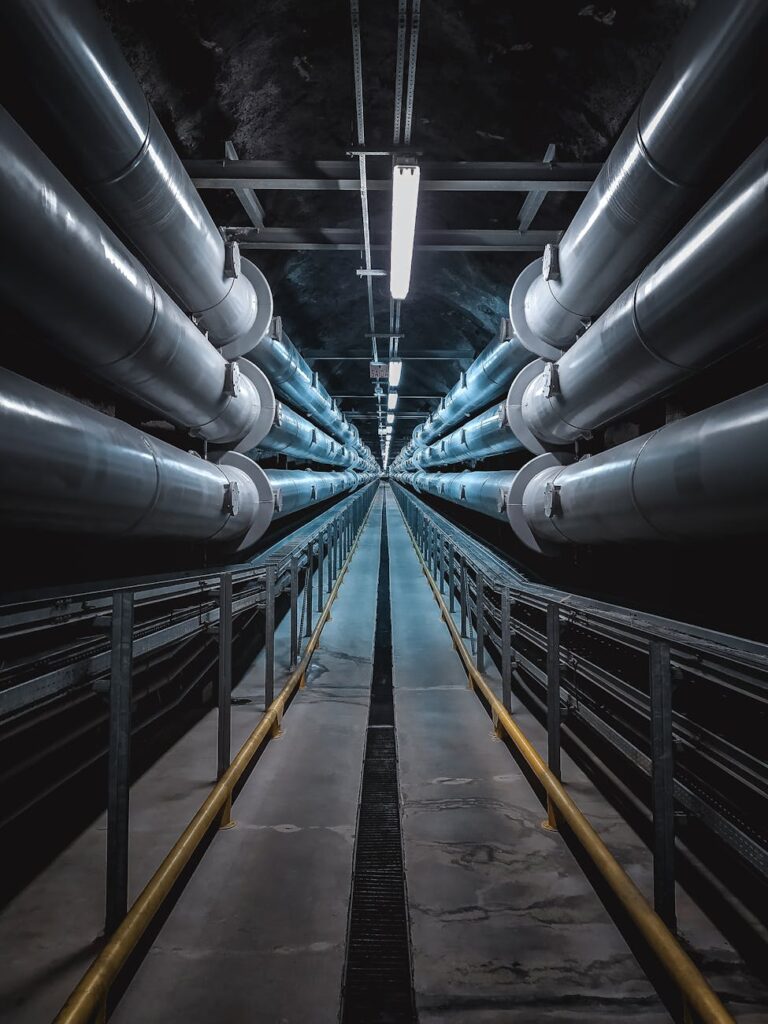Industrial piping plays a vital role in the efficient transport of fluid, gases, and solids within industrial settings. But what is industrial piping, exactly? It refers to complex networks of pipes, fittings, and valves designed to support the internal operations of facilities across a wide range of industries, such as power plants, oil and gas, chemical manufacturing, and food processing.
These piping systems are engineered to handle extreme conditions—including high temperatures, pressure variations, and chemical exposure—making them essential for modern industrial infrastructure.
Evolution from Wood to Metal in Piping Engineering
In earlier days, wooden pipes were easier to maintain than metal and were widely used for pipe construction. Since wood is a much better electrical insulator, it served well in certain environments. However, as demands increased and materials science advanced, carbon steel and other metals became the go-to materials due to their resilience under stress, heat, and corrosive exposure.
Today, pipes are used in intricate piping systems that include the in-line components and other devices such as sensors, pressure relief valves, and expansion joints to ensure operational safety and reliability.
Key Features of Industrial Piping Systems
Every industrial piping system must be meticulously designed. Pipe stress engineers analyze potential strain, pressure loads, and expansion to ensure performance and prevent issues such as water hammer, leaks, or misalignments. It is necessary to verify that the routing supports the system’s long-term integrity and complies with industrial standards.
Modern piping design includes materials and configurations that prevent freezing as compared to older systems, especially in the outdoors. Additionally, the detailed specification of piping material helps combat corrosion, reduce maintenance, and support normal operating conditions.
Applications Across a Range of Industries
Industrial piping is integral to systems that transport water, chemicals, steam, oil, gas, and fine particles. It supports everything from power piping and process piping to distribution pipelines. These systems are used in environments where stability, flow control, and safety are critical.
Piping systems are used not only to move substances efficiently, but also to protect them from weathering and fungus growths. Systems may be installed both indoors and outdoors, with designs tailored to ensure optimal performance at every level.
The Importance of Proper Engineering
Designing an effective industrial piping system is not just about connecting components. It’s about ensuring that the compact pile of parts functions as a cohesive, durable, and safe whole. Whether dealing with hydrogen piping, steam piping etc, or structures that will operate in aggressive conditions, expert planning and engineering are essential.
For anyone looking to develop or upgrade a piping solution, piping engineering provides the backbone for success across industries—because piping is not just infrastructure; it’s the foundation for flow, function, and future readiness.



